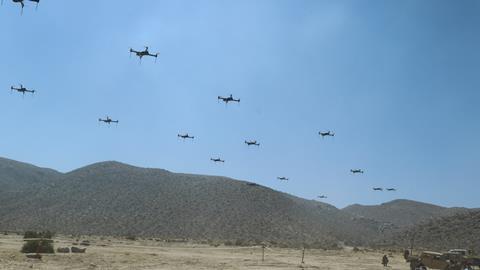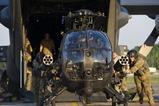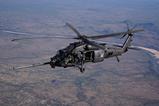Senior leaders within the US Army say they will adopt a diverse range of uncrewed aerial systems (UAS) in the coming years, with new platforms delivered to combat units small and large.
The army has multiple fielding programmes underway, covering at least four UAS types of varying configurations.
“It looks like a lot and it might look scattered, but actually that’s on purpose,” said assistant army secretary Doug Bush on 27 September at the Center for Strategic and International Studies.
“We’re placing a lot of bets,” adds Bush, who oversees procurement for the army. “We need to see what’s going to work and we need soldiers to experiment with it and learn.”
Included among uncrewed aircraft the army is currently purchasing are the minuscule Teledyne FLIR Black Hornet, which is already assisting small squads of soldiers in performing urban reconnaissance.
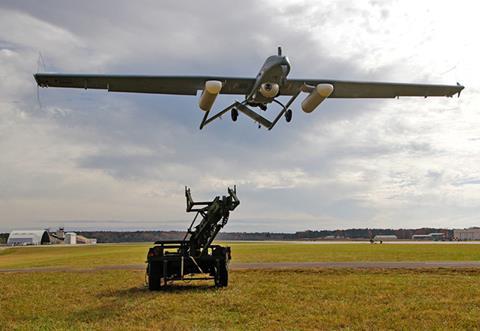
Under a $14.7 million contract announced in September, the service will also purchase Anduril’s helicopter-style Ghost X and Performance Drone Works’ C-100 quadcopter, both of which are intended to provide low-cost reconnaissance and lethal strike options to commanders of larger company-sized formations.
For higher-level commanders, the army’s Future Tactical Uncrewed Aerial System (FTUAS) programme aims to deliver a larger platform to provide battalion and brigade commanders with a more-capable reconnaissance aircraft that can take-off and land vertically.
The UAS currently filling that role – Textron’s RQ-7B Shadow – is a traditional fixed-wing vehicle that launches from a pneumatic catapult.
Griffon Aerospace and Textron are finalists for the FTUAS requirement, having beaten competitors Northrop Grumman, Sierra Nevada and AeroVironment. Both firms have proposed hybrid designs capable of both vertical and horizontal flight, with flight testing underway.
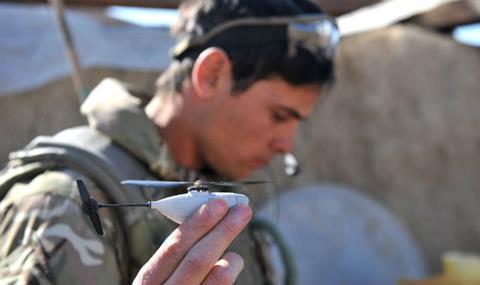
The goal behind fielding so many different systems, army leaders say, is to evaluate the wide variety of UAS technology available, to assess the best fit for various battlefield roles.
“At some point it will probably coalesce a bit more into bigger programmes,” Bush notes. “But for now I think this approach of placing many bets is the right thing given the diversity of the tech.”
While the army has been using uncrewed aircraft to perform reconnaissance and intelligence for some two decades, observations from the ongoing Russia-Ukraine war have convinced generals at the Pentagon they need to expand the role of UAS in ground operations.
General James Rainey, head of Army Futures Command, says large numbers of cheap, unmanned systems are creating “unprecedented” disruption of how armies fight.
“How do you fight under constant observation and contact?” he asks.
Ukrainian and Russian troops have endured staggering casualty rates, with drones being used to ambush vehicles and dismounted personnel and to target conventional artillery with greater effectiveness.
“This is going to be a characteristic of future conflict,” Rainey says.
For now, the US Army is focused on using UAS to supplement the capability of its existing combat formations. However, Rainey says the service is experimenting with the creation of “lethal unmanned systems platoons”, which would focus solely on targeting enemy forces with armed drones.
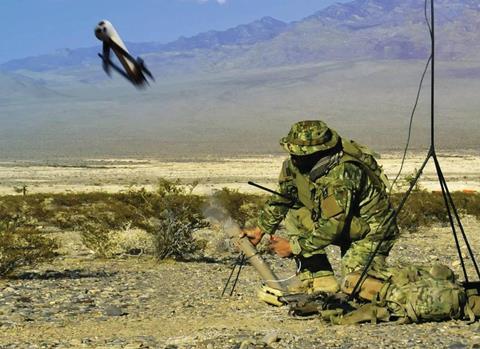
Such systems offer a unique blend of precision and what the army calls “mass” – the ability to launch large volumes of fire.
Previous long-range fire systems forced commanders to choose between precision and mass, Rainey says. They could fire large volleys of parabolic artillery projectiles or a few highly accurate, highly expensive guided munitions – such as the Lockheed Martin High Mobility Artillery Rocket System.
Small, low-cost, lethally armed UAS eliminate that trade-off for commanders, Rainey notes. “Now you can deliver mass with precision.”
The shift is already underway, with plans to order more than 1,000 AeroVironment Switchblade loitering munitions for the US Army, according to Bush.
The lightweight, disposable UAS can be carried by soldiers and launched without additional equipment. AeroVironment tells FlightGlobal the system has range in the “tens of kilometres” and can deliver lethal strikes as directed by human operators.
The Switchblade previously saw combat service with US Army special operators in Afghanistan and more recently with the Ukrainian army. Smaller Switchblade 300s were among the earliest military assistance packages sent to Ukraine by Washington in 2022.






















